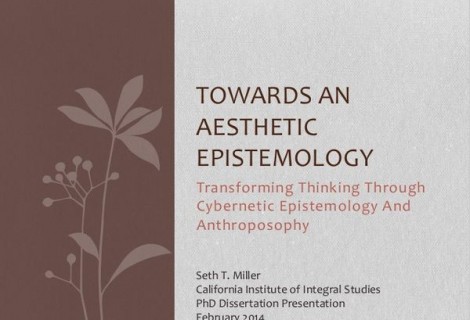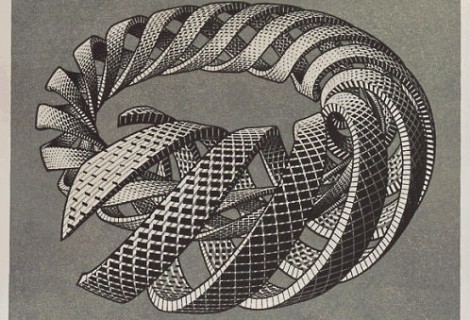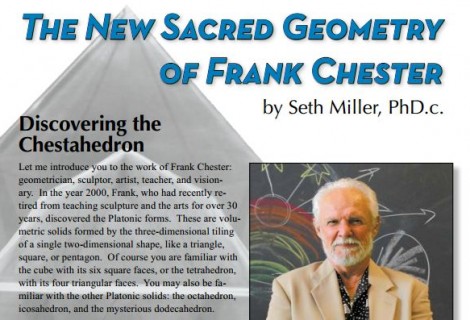An Esoteric Guide to Spencer Brown’s Laws of Form #1
« Previous Page | 1 2 3 4 | View All | Next Page »
Strictly speaking, the Laws of Form cannot be written, but in attempting to write them, they can be indicated by the marks: what is not in the mark is indicated by the mark, although it is also in the mark. If you think this is a paradox, then you are correct, but it is a functional paradox in that it can actually accomplish something by its existence, which is exactly why so many mystical or cosmological traditions utilize the paradox as a central form of learning and communication. This is true even of Jesus Christ, as Parker Palmer elucidates:
“The promise of paradox is the promise that apparent opposites–like order and disorder–can cohere in our lives, the promise that if we replace either-or with both-and, our lives will become larger and more filled with light. It is a promise at the heart of every wisdom tradition I know, not the least the Christian faith. How else can I make sense of the statement ‘If you seek your life, you will lose it, but if you lose your life, you will find it’? Or ‘The first shall be last and the last shall be first’? Or the affirmation that Jesus Christ was fully human and fully divine? Or the notion that we know there is a God but we cannot claim to know the God that is?” -Parker Palmer, The Promise of Paradox, p. xxix (2008)
The point is that something happens when we engage with paradox. GSB, who recognized that Russell and Whitehead’s Theory of Logical Types, which explicitly excluded paradox, was in error, and the “problem” of the paradox wasn’t actually:
LoF p. x
- Put as simply as I can make it, the resolution is as follows. All we have to show is that the self-referential paradoxes, discarded with the Theory of Types, are no worse than similar self-referential paradoxes, which are considered quite acceptable, in the ordinary theory of equations.
He goes on to say that he found a way to deal with these paradoxes by incorporating them formally, which required the recognition of imaginary values,
LoF p. xi
- which means that a valid argument may contain not just three classes of statement, but four: true, false, meaningless, and imaginary. The implications of this, in the fields of logic, philosophy, mathematics, and even physics, are profound.
Indeed, as GSB will have it, the whole of Time and Space in a sense arise out of a paradox, but that’s much later. He continues by indicating that:
LoF p. xx
- we have a direct awareness of mathematical form as an archetypal structure. I try in the final chapter to illustrate the nature of this awareness. In any case, questions of pure probability alone would lead us to suppose that some degree of direct awareness is present throughout mathematics.
Rudolf Steiner would indicate that this direct awareness is spiritual in nature, and arises through a free activity of the spirit. In any case, such direct awareness must be considered both real and essential to epistemology. That is to say, a science of knowing cannot discard (as Russell and Whitehead tried in their failed Principia Mathematica) the role of intuitive knowing. This is a knowing that cannot be achieved through deductive or inductive processes; it is of a completely different type. GSB explicitly recognizes this difference in his discussion of the distinction between a proof and a demonstration in mathematics (re: 1973 Esalen conference, session 2): a computer can do a demonstration, because it relies only upon manipulation of what is already known, while a proof can only arise on the basis of what is not already known, and which cannot be reduced to mere calculations.
LoF p. xxi
- It becomes apparent that if certain facts about our common experience of perception, or what we might call the inside world, can be revealed by an extended study of what we call, in contrast, the outside world, then an equally extended study of this inside world will reveal, in turn, the facts first met with in the world outside: for what we approach, in either case, from one side or the other, is the common boundary between them.
Put simply, this is simply a recapitulation of the central tenet of alchemy, “As Above, so Below; as Below, so Above”. Steiner clearly indicates that if you want to know yourself, you need to look into the world, and if you want to know the world, look into yourself. Know the world to know yourself; know yourself to know the world. What GSB usefully adds to this principle, which is often overlooked in esoteric circles, is that the link between this inner and outer takes the functional form of a shared boundary. It is not the case in a simple way that what is inner is outer; it’s just not very useful to say inner=outer. The point is that there is a boundary between inner and outer, but that this boundary is where all the interesting bits happen, because it is the domain of action by virtue of which inner and outer become so. Or more seriously, is the place upon which, and through which, one must work if one is to transform, because this is what transformation means: to cross the boundary (which is coincident with creating the boundary, as we will see momentarily). For anyone that has read LoF, you know that this language of “crossing” is quite deliberate; the activity of crossing changes what is crossed. More on this later.






Thanks for posting this!